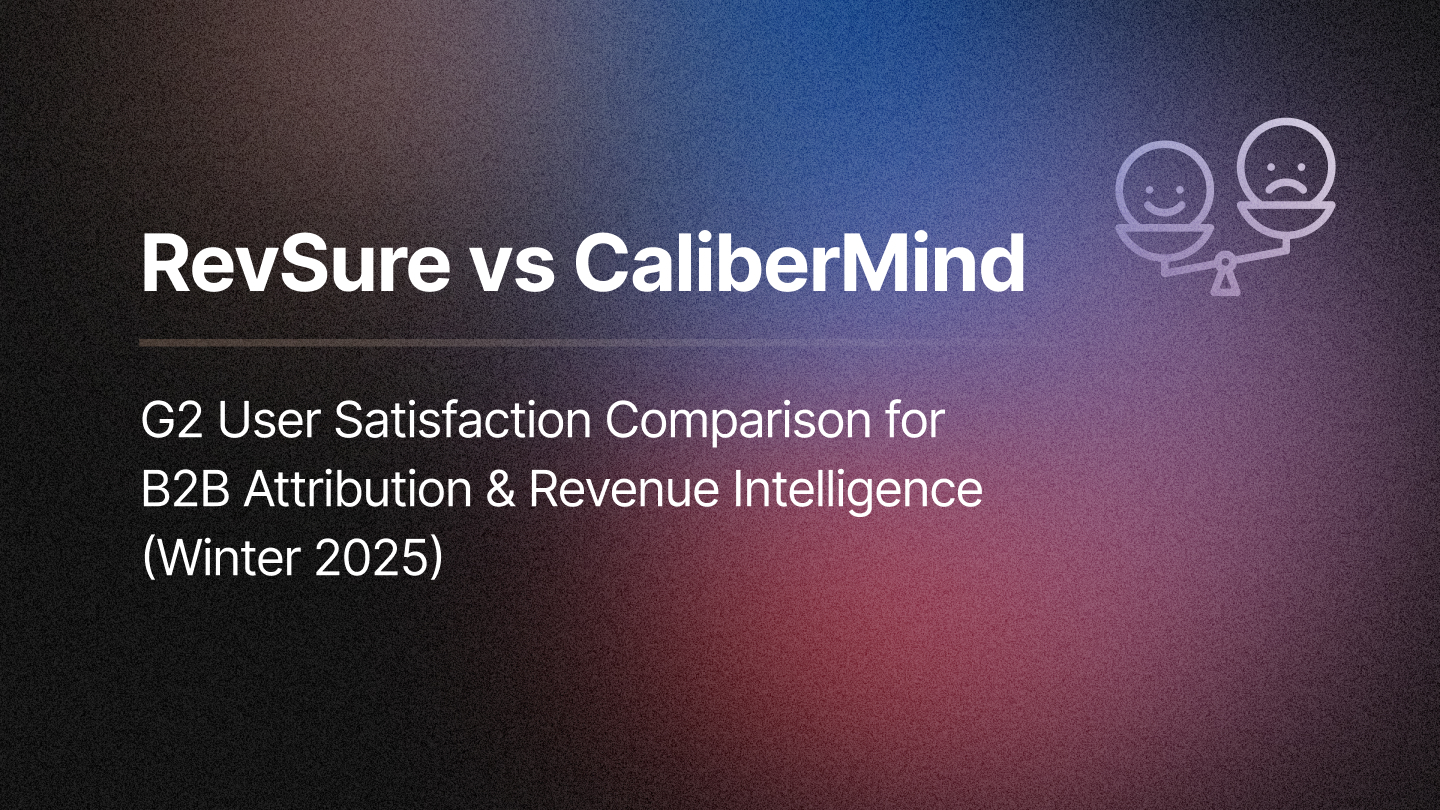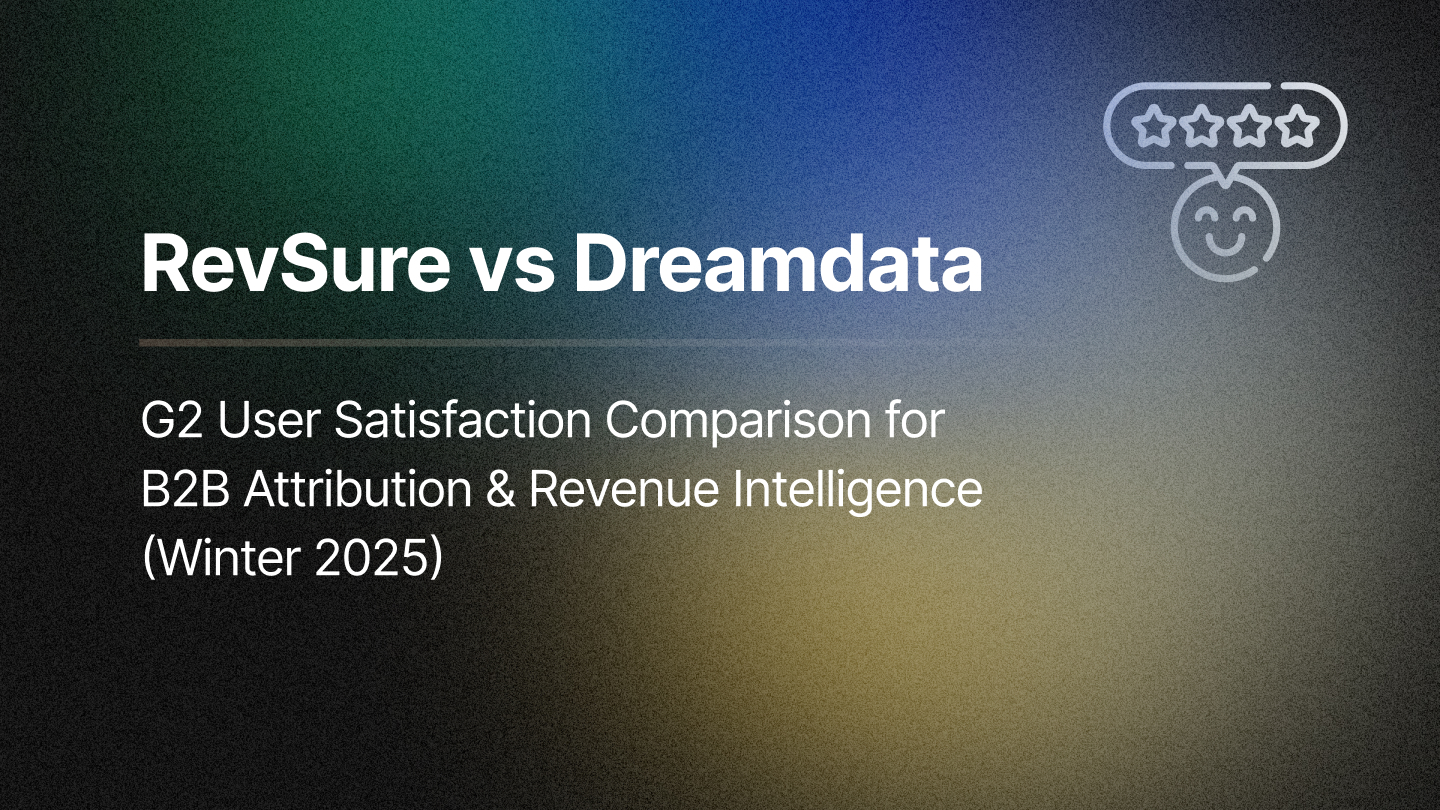In the modern B2B landscape, marketing leaders face immense pressure to prove the return on investment (ROI) for every dollar spent. According to the Marketing Measurement and Attribution Benchmark Survey, 73% of B2B marketers are increasing their focus on measurement and attribution to demonstrate the ROI of all their marketing investments. One key metric driving this effort is Cost per Opportunity (CPO). CPO represents how much marketing spend is needed to generate a qualified sales opportunity, making it an essential indicator of marketing efficiency and pipeline health.
A low CPO is a sign of cost-effective marketing, meaning that resources are being used efficiently to target the right prospects and generate viable sales opportunities. This indicates a strong alignment between marketing and sales in nurturing high-quality leads. Conversely, a high CPO may signal wasted spend on ineffective campaigns or channels that aren’t yielding viable opportunities.
For B2B organizations, especially those with longer sales cycles, CPO is often a more accurate and meaningful metric than simple cost-per-lead (CPL) measures. At the intersection of marketing and sales, opportunities are the leads that sales teams have accepted and engaged with. Tracking and improving CPO provides valuable insight into how well marketing activities are converting into pipeline opportunities and ultimately revenue. Lowering CPO means that you’re driving more opportunities for the same or reduced marketing spend – a key goal for any ROI-focused B2B team.
However, achieving this goal requires accurate marketing attribution. Attribution allows marketers to understand which touchpoints – whether ads, content, emails, or events – are most effective at driving opportunities. In this blog, we will explore how improved attribution can serve as a direct lever to reduce CPO, increase ROI, and help B2B marketers optimize their spend for more predictable pipeline growth.
Common Marketing Attribution Challenges in B2B
While attribution is essential for lowering CPO, it’s not always easy to implement effectively, especially in complex B2B environments. Here are some of the most common challenges marketers face:
- Long, Complex Buyer Journeys: B2B customer journeys are often long and non-linear, with multiple stakeholders interacting with various touchpoints over weeks or months. A single opportunity might be influenced by a decision-maker reading a whitepaper, an end-user attending a demo, and an influencer engaging on LinkedIn. These diverse interactions complicate attribution, making it difficult to accurately assign credit to the right channels or campaigns.
- Data Silos and Fragmentation: Marketing data often resides in different systems – ad platforms, web analytics, CRM tools, and more – creating silos that prevent a unified view of the customer journey. Without data integration, attribution efforts suffer, as marketers cannot connect all touchpoints leading to an opportunity.
- Offline and Dark Touches: Not all interactions are digital, especially in B2B. Offline touches such as events, direct mail, and even word-of-mouth referrals often go untracked. This "dark" data leaves gaps in attribution, potentially overlooking influential interactions that should be credited for generating an opportunity.
- Technical Tracking Limitations: Tracking interactions across multiple devices and platforms can be difficult, particularly in the face of cookie restrictions and privacy regulations. If marketers can't match an individual’s activity across devices (e.g., work laptop, mobile phone), attribution can miss important touchpoints that contribute to an opportunity.
- Organizational and Model Challenges: Attribution often requires alignment between marketing and sales teams, but differing opinions on which touchpoints deserve credit can lead to friction. Additionally, many B2B organizations still rely on simplistic attribution models like first- or last-touch, which can fail to capture the full impact of the customer journey.
Strategies to Improve Attribution Across the Funnel
To improve CPO, B2B marketers must adopt strategies that enhance attribution across all stages of the sales funnel. Here are some best practices to optimize attribution and reduce CPO:
- Implement Multi-Touch Attribution Models: Relying on a single touchpoint (e.g., first-click or last-click) oversimplifies the buyer’s journey. Multi-touch attribution (MTA) models, such as linear, time-decay, or position-based, assign credit to every interaction that contributes to a conversion. This approach helps marketers understand the true impact of each channel at different stages of the funnel.
- Consolidate and Clean Your Data: Accurate attribution starts with clean, unified data. Break down data silos by integrating systems like CRM, marketing automation, and ad platforms. Establish a single source of truth for all marketing touchpoints, and ensure consistent tracking through standardized UTM parameters, campaign naming, and lead deduplication. This enables marketers to assign credit to all relevant touches accurately.
- Track Offline and Cross-Channel Interactions: Attribution shouldn’t be limited to digital interactions. Track offline activities such as events, direct mail, and phone calls, and ensure they’re tied to your CRM system. By expanding tracking coverage to all touchpoints – both online and offline – marketers can build a more complete view of the customer journey.
- Align Attribution Metrics with Sales Funnel Stages: Different touchpoints play different roles in the sales funnel. For example, first-touch attribution is useful for identifying lead-generation channels, while opportunity-touch attribution helps pinpoint the touchpoints most directly linked to a sale. Align attribution models with specific stages of the funnel to ensure a more accurate understanding of marketing’s impact at each stage.
- Continuously Analyze and Optimize Spend: Attribution is an ongoing process, not a one-time project. Regularly review attribution data to evaluate the performance of each channel and campaign. Identify which tactics are generating opportunities at the lowest cost, and reallocate the budget to those high-performing areas. This continuous loop of analysis and optimization enables marketers to reduce CPO over time.
Leveraging Tools and Platforms for Better Attribution
Tackling attribution across multiple channels and data sources can be overwhelming without the right tools. Thankfully, modern marketing attribution solutions make this process easier by automating data collection, applying advanced attribution models, and providing insights that drive decision-making.
Marketing platforms like HubSpot, Marketo, and Google Analytics 4, as well as dedicated attribution tools like RevSure, offer features like multi-channel tracking, account-based attribution, and robust reporting. These tools enable marketers to consolidate data, apply sophisticated attribution models, and uncover actionable insights.
Case Study – mabl’s Attribution Transformation
One of the most compelling examples of leveraging attribution tools is the B2B SaaS company mabl. Prior to implementing RevSure’s attribution platform, mabl struggled with fragmented data and a lack of visibility into the full marketing funnel. This made it difficult to optimize campaigns or prove the impact of marketing on pipeline growth.
After adopting RevSure’s full-funnel attribution solution, mabl was able to unify its data across all channels and gain a comprehensive view of the customer journey. The results were significant: mabl improved its pipeline ROI by 50% through smarter budget decisions based on attribution insights, and the time spent preparing reports was cut by 60%. This freed up more time for strategic decision-making and campaign optimization.
Mabl’s CMO, Ryan Shopp commented, “Understanding the impact of our marketing programs and spending using RevSure’s detailed analytics is a game-changer. We take a data-driven approach to everything from board presentations to day-to-day execution.”
Key Takeaways and Best Practices
For B2B marketers aiming to reduce Cost per Opportunity through better attribution, here are the key takeaways:
- Attribution is Key to Lowering CPO – You can’t optimize CPO without knowing which marketing efforts are driving opportunities efficiently. Accurate attribution helps identify the most effective campaigns and channels, so you can invest in what works and cut what doesn’t.
- Break Down Data Silos – Unify your marketing stack and clean up your data to ensure accurate attribution. A single source of truth for all touchpoints will enable you to track the full customer journey and assign credit correctly.
- Adopt a Multi-Touch Attribution Approach – Rely on holistic, multi-touch attribution models that capture the full buyer journey. This will give you a more balanced view of which marketing activities are driving results across the funnel.
- Use Tools to Scale Attribution – Invest in marketing attribution tools that automate data collection, apply advanced models, and generate actionable insights. This will save your team time and improve the accuracy of your attribution efforts.
- Align Teams Around Attribution – Foster a culture of collaboration between marketing and sales, and ensure alignment on attribution definitions and goals. When both teams trust the data, they can work together to optimize marketing spend and reduce CPO.
In conclusion, improving marketing attribution is one of the most powerful strategies for lowering CPO and driving more efficient B2B marketing. By understanding which activities contribute to opportunities and optimizing spend accordingly, you can create a leaner, more effective marketing machine that delivers higher-quality opportunities at a lower cost. Implementing better attribution strategies is a journey, but one that pays off with greater marketing ROI and a stronger competitive edge in the market.
Related Blogs





.jpg)

